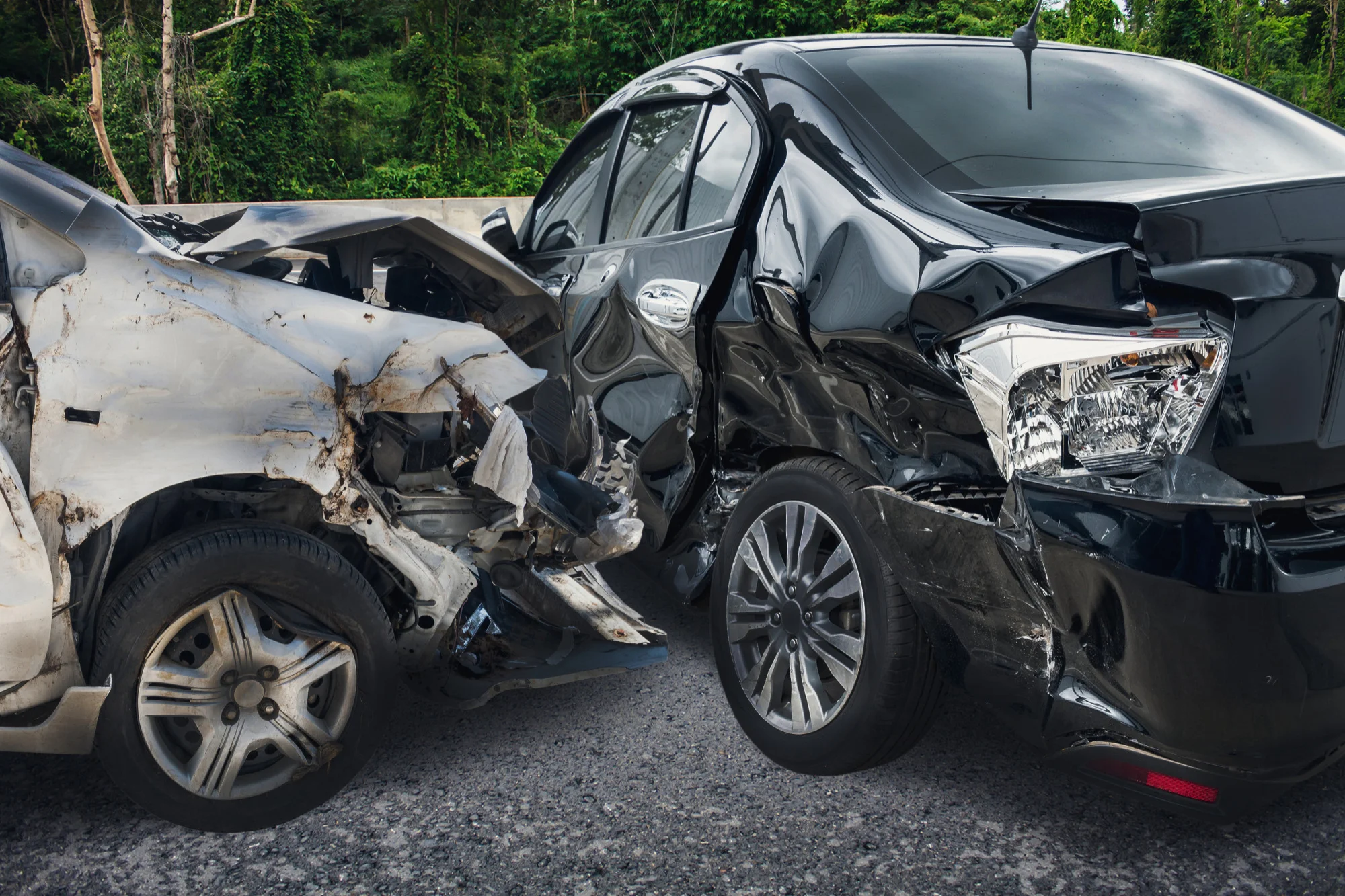Motor vehicle fatalities represent one of the most significant public safety concerns in the United States, with the stark reality of 42,795 lives being lost in traffic accidents during 2022. This sobering statistic sheds light on a particularly troubling trend, as vehicle related incidents remain the primary cause of death among those aged 5 to 29. While the National Safety Council places the overall probability of dying in a car crash at approximately 1 in 93, these odds can shift dramatically based on individual factors such as frequency of travel, driving habits, and road conditions. Understanding these risks is essential for making informed transportation decisions, especially considering that the average person will experience roughly three car accidents throughout their lifetime. Despite ongoing advancements in automotive safety technology, current data suggests that roadway dangers continue to pose a significant threat to public safety.
Lifetime Odds of Being in a Fatal Car Crash
The lifetime probability of experiencing a fatal car crash, according to the National Safety Council’s 2022 data, places the risk at 1 in 93 for Americans. This equates to a 1.08% chance over one’s lifespan. This figure contextualizes vehicular fatalities among other common causes of death, with the National Highway Traffic Safety Administration reporting an encouraging trend in the vehicle miles traveled (VMT) fatality rate. This metric decreased from 1.38 per 100 million in 2021 to 1.33 VMT in 2022, though these statistics represent population wide averages rather than individual risk factors.
Fatal car accident odds compared to other common causes of death and their lifetime odds:
- Heart disease: 1 in 6
- Cancer: 1 in 7
- Opioid overdose: 1 in 96
- Fatal falls: 1 in 92
- Car accidents: 1 in 93
- Motorcycle crashes: 1 in 722
- Bicycle incidents: 1 in 3,162
- Dog attacks: 1 in 69,016
- Hot surfaces and chemical exposure: 1 in 50,341
Vehicle Collision Odds Over Your Driving Years
While the likelihood of experiencing a fatal crash may be relatively low, the probability of being involved in any vehicular collision during one’s lifetime is remarkably high. Insurance industry data reveals that approximately 77% of American drivers will experience at least one accident during their time behind the wheel, with the average driver needing to file an insurance claim approximately once every 18 years. This translates to an estimated three to four collisions over a typical driving lifetime, starting from age 16. The risk is particularly pronounced among teenage drivers, especially males aged 16 to 19, who face elevated accident rates due to a combination of factors including inexperience, propensity for excessive speeds, irregular use of safety restraints, and possible impairment from intoxicating substances. These statistics highlight the critical importance of developing safe driving habits early, as the initial years of driving significantly influence one’s lifetime accident probability.
What are the Odds of Being Injured in a Car Accident?
The ratio between fatal accidents and injury producing collisions reveals a sobering reality about road safety: while vehicle related fatalities are concerning, the likelihood of sustaining injuries in a crash is dramatically higher as this number exceeds fatal outcomes by more than 100 fold. This disparity is clearly illustrated by 2019 statistics, which documented approximately 39,000 vehicular fatalities compared to over 4.5 million injury cases requiring medical intervention. The economic impact of these injuries is staggering as they result in $7.5 billion in lost productivity and an overwhelming $463 billion in medical expenses annually. These figures represent only medically documented injuries that range from minor lacerations to severe spinal trauma and head injuries.
Common Injuries Sustained in Car Accidents
Vehicle collisions can result in a wide spectrum of injuries, ranging from minor to severe, with some potentially leading to long term health complications or permanent disability. The impact of these injuries extends beyond physical trauma, often affecting victims’ mental health and overall quality of life. Understanding the most common injuries can help individuals recognize the importance of prompt medical attention following an accident, regardless of the perceived severity. Common car accident injuries include:
- Broken Ribs: The delicate structure of the rib cage makes it susceptible to fracture even in minor to moderate impacts
- Soft Tissue Injuries: Most frequently occurring type of injury, affecting muscles, ligaments, and tendons, with whiplash being particularly common in the neck and upper back region
- Limb Injuries: Confined space in vehicles can lead to arms and legs impacting dashboards or seats, resulting in bruising, sprains, breaks, and lacerations
- Chest Trauma: Potentially fatal injuries caused by impact with seat belts, dashboards, or airbags, resulting in blunt force trauma to the thoracic area
- Internal Injuries: Various organs can be affected by the force of impact
- Eye Trauma: Impact or debris can cause various vision related complications
- Pregnancy Complications: Including potential miscarriage risks in expecting mothers
Factors That Can Impact the Odds of Dying in a Car Accident
The likelihood of a fatal vehicular accident is influenced by a complex interplay of human factors, environmental conditions, and technological safeguards. Modern vehicle safety innovations, including anti-lock braking systems (ABS), electronic stability control (ESC), and automated emergency braking, have contributed significantly to reducing fatality risks. However, despite these technological advances, human behavior remains the primary determinant in accident outcomes, with driver decisions accounting for approximately 95% of collisions and recognition errors contributing to 40% of incidents. Key factors affecting car accident fatality risks:
- Age Related Risks: Younger drivers (16 – 22) face significantly higher fatality rates due to inexperience and risk taking behavior.
- Gender Differences: Male drivers face three times higher fatality risks than women, primarily due to increased engagement in high risk driving behaviors
- Safety Equipment Usage: Seat belt utilization dramatically impacts survival rates, with 53% of fatalities among drivers aged 16 – 20 involving unrestrained occupants
- Vehicle Selection: Choice of vehicle significantly affects survival odds, with certain models showing higher fatal accident rates (e.g., Chevrolet Silverado: 8,777 fatal accidents from 2016 – 2020 vs Toyota Corollas: 3,641 fatal accidents from 2016 – 2020)
- Environmental Factors: Weather conditions such as rain, snow, ice, and fog reduce visibility and traction which increases accident probability
- Geographic Location: Urban areas experience higher accident rates due to traffic density, while rural locations see fewer but often more severe crashes
- Impaired Driving: Alcohol and drug use substantially increase fatality risks, with 30% of single car fatalities involving substance impairment
- Driving Behaviors: Speeding, distracted driving, tailgating, and aggressive lane changes significantly elevate accident risks
How Does Drunk Driving Impact Your Odds of Being in a Fatal Car Accident?
The decision to drive under the influence of alcohol significantly elevates the risk of fatal accidents, with impairment effects becoming increasingly dangerous as blood alcohol concentration (BAC) rises. Statistical evidence demonstrates that alcohol related crashes are particularly prevalent during weekend evenings, especially on Saturdays, which shows the correlation between social drinking patterns and traffic fatalities. The advent of ride sharing services and modern transportation alternatives has made it easier than ever to avoid the potentially lethal decision to drive while impaired, yet many continue to take this unnecessary risk. Blood Alcohol Content (BAC) levels and their effects on driving ability:
BAC 0.02: Initial impairment begins with altered mood and increased body warmth, though effects may seem minimal
BAC 0.05: Judgment becomes compromised, with decreased alertness and exaggerated behavior patterns emerging
BAC 0.08: Critical driving skills severely affected, including:
• Impaired memory function
• Diminished speech control
• Reduced reaction time
• Difficulty maintaining proper lane position
BAC 0.15: Severe impairment manifests through:
• Significant loss of muscle control
• Compromised balance
• Increased risk of physical illness
• Complete inability to drive safely
The safest course of action when experiencing any level of alcohol impairment is to utilize alternative transportation options, as even slight intoxication can significantly impact driving capability and judgment.
What Kind of Survival Rate Do You Have if You Get into a Head On Collision?
The survival probability in head on collisions exhibits a dramatic correlation with impact velocity, ranging from a reassuring 99% survival rate in low speed incidents to a stark 31% chance of survival when vehicles collide at 50 mph. When speeds exceed 70 mph in head on crashes, the likelihood of survival plummets dramatically, with such high velocity impacts almost invariably resulting in fatalities due to the exponential increase in collision force.
Car Accident Trends and Statistics
Recent data reveals alarming trends in vehicular fatalities, with approximately one accident occurring every 60 seconds on American roadways. The severity of this issue is highlighted by the global impact, where 1.35 million lives are lost annually to vehicle crashes. Despite advancements in automotive safety technology, the United States has witnessed a concerning upward trajectory in fatalities, particularly during the COVID – 19 pandemic when decreased traffic paradoxically led to more dangerous driving behaviors. Urban areas face additional challenges, with pedestrian fatalities disproportionately affecting low income communities at nearly triple the rate of higher income areas.
U.S. Vehicle Fatality Statistics by Year:
- 2018: 36,835 deaths
- 2019: 36,355 deaths
- 2020: 42,060 deaths (representing the largest single year increase in a century)
- 2021: 42,939 deaths
- 2022: 42,795 deaths
Key Statistical Insights:
- Frequency: Average driver files a collision claim every 17 years
- Lifetime Accidents: Typical driver experiences approximately three accidents after obtaining license at age 16
- Daily Impact: 28 alcohol related traffic fatalities occur each day in the U.S.
- Regional Variations: Higher absolute fatality numbers in populous states like California and Texas, but greater per capita rates in rural states such as Wyoming and Montana
Vehicle Safety Improvements vs Modern Fatality Trends
Despite significant advances in automotive safety technology, including innovations like automated collision avoidance systems, lane departure warnings, and enhanced parking assistance features, the United States continues to experience a concerning upward trend in traffic fatalities. This paradox highlights that while vehicles themselves have become substantially safer through engineering improvements and sophisticated safety features, human behavior remains a critical factor in accident outcomes. While modern vehicles offer unprecedented safety capabilities, from intelligent braking systems to automated crash prevention technology, the effectiveness of these innovations is often counteracted by increasingly risky driving behaviors during certain high risk periods like major holidays and late night hours. The timing of travel plays a crucial role in accident probability, with specific dates like New Year’s Eve and the day before Thanksgiving showing markedly higher rates of fatal accidents due to increased instances of impaired driving which suggests that even the most advanced safety features cannot fully compensate for poor judgment in choosing when and how to drive.
Driving Tips to Help You Survive a Car Accident
While no driver can completely eliminate the risk of being involved in a vehicular collision, adopting proactive safety measures and defensive driving techniques can significantly improve survival odds in the event of an accident. Understanding and consistently implementing proper safety protocols represents the most effective strategy for protecting yourself and others on the road, as many fatal accidents result from preventable circumstances and behavioral choices.
Restraint Practice: The cornerstone of vehicle safety begins with proper restraint usage, including wearing seatbelts at all times, ensuring all passengers are securely buckled, and utilizing appropriate child safety seats according to age and size requirements.
Attention Management: Maintaining focus while driving requires eliminating common distractions such as mobile phone usage, avoiding eating or drinking while operating the vehicle, and minimizing engaging conversations during challenging driving conditions or heavy traffic situations.
Behavioral Guidelines: Safe driving behavior encompasses maintaining appropriate following distances between vehicles, avoiding aggressive or sudden maneuvers, and never operating a vehicle while under the influence of alcohol or drugs.
Legal Compliance: Following all traffic regulations represents a crucial aspect of road safety, including maintaining valid licensing, respecting age related driving restrictions, yielding appropriately to other road users including pedestrians and cyclists, and adhering to all local traffic laws and signage including speed limits.
Why It is Important to Maintain Your Vehicle
Regular vehicle maintenance plays a crucial role in preventing accidents and ensuring optimal safety performance of automotive systems. Beyond preserving the vehicle’s value and functionality, consistent maintenance directly impacts critical safety features that could mean the difference between life and death in potential accident scenarios. Just as buildings and infrastructure require routine care, vehicles demand regular attention to maintain their safety features and mechanical integrity at peak performance levels. Warning Signs Requiring Immediate Attention:
- Dashboard Warnings: Illumination of check engine, service, or tire pressure indicators
- Performance Issues: Reduced acceleration or braking efficiency
- Mechanical Concerns: Unusual vibrations, stalling problems, or starting difficulties
- Operational Changes: Decreased fuel efficiency or transmission irregularities
Essential Maintenance Schedule:
- Monthly/Quarterly Tasks:
- Lubricant replacement: After each 3,000 miles for standard/blended oil types. 10,000 miles or over or annually for premium synthetic options
- Wheel position adjustment: Bi-annual service or at recommended mileage markers
- Basic systems check: Monthly visual inspection
- Annual Requirements:
- Comprehensive vehicle inspection: Every 12 months
- Brake system evaluation: Yearly or as needed
- Safety feature testing: Annual verification
- Long term Maintenance:
- Coolant replacement: Every 60,000 miles
- Fuel filter service: Every 30,000 miles
- Major systems review: According to manufacturer specifications
Legal Options Following a Fatal Vehicle Collision
The unexpected loss of a loved one in a vehicular accident creates profound emotional trauma while simultaneously presenting complex legal and financial challenges for surviving family members. Though no legal remedy can fully address the depth of such a loss, state laws provide mechanisms for families to seek compensation through wrongful death claims against responsible parties, provided they act within jurisdiction specific time limitations. These claims require demonstrating that the defendant’s negligence or reckless behavior directly caused the fatal accident, and successful cases can provide compensation for multiple types of damages, including immediate expenses like funeral costs and medical bills incurred before death, as well as long term financial impacts such as lost future income, pension benefits, and healthcare coverage. Additionally, courts recognize the profound personal loss experienced by immediate family members, allowing claims for loss of companionship, comfort, and guidance, with typical beneficiaries including spouses, children, and parents of the deceased. Given the complexity of these legal proceedings and the emotional burden on grieving families, seeking immediate assistance from qualified legal counsel can provide essential support in navigating the claims process while allowing family members to focus on their emotional recovery.
How to Prove Wrongful Death
Successfully establishing a wrongful death claim in automobile fatality cases requires demonstrating clear evidence of negligence through a specific legal framework. While each jurisdiction may have unique requirements, the fundamental principles remain consistent across most states, with the burden of proof resting on the plaintiff to establish a direct connection linking the responsible party’s conduct to the fatal outcome.
Essential Elements to Prove Wrongful Death:
- Duty of Care
- Breach of Duty
- Direct Causation
- Quantifiable Damages
These core components must be substantiated through various forms of evidence, which may include police reports, accident reconstruction data, witness statements, medical records, and expert testimony. The ability to clearly demonstrate these elements often determines the success of a wrongful death claim, making thorough documentation and professional legal guidance essential from the earliest stages of the case.
Wrongful Death Settlements
Wrongful death settlements represent a financial resolution between the responsible party (or their insurance provider) and the deceased’s family members, serving as compensation for both tangible and intangible losses resulting from the fatal accident. The settlement value varies significantly based on multiple factors including the circumstances of the accident, the extent of liability, and the eagerness of involved parties to avoid lengthy litigation. Legal representatives typically pursue settlement negotiations before proceeding to trial to achieve a fair compensation package that addresses immediate financial burdens such as medical and funeral expenses, while also accounting for long term impacts like lost income and emotional suffering. While monetary compensation cannot fully address the profound loss experienced by surviving family members, a properly negotiated settlement can provide crucial financial stability during the grieving process and offer a measure of closure through the acknowledgment of responsibility for the tragic event.
Contact Mesriani Law Group if a Family Member Has Died in a Car Accident
If you have lost a loved one in a car accident due to another party’s negligence, navigating the complex legal landscape of wrongful death claims should not add to your emotional burden. The experienced legal team at Mesriani Law Group understands the profound impact of such losses and possesses the expertise to handle every aspect of your claim with sensitivity and dedication. Our attorneys will work tirelessly to establish liability, document damages, and negotiate with insurance companies while you focus on healing and remembering your loved one. Let us help secure the compensation your family deserves during this difficult time. Contact Mesriani Law Group today for a confidential consultation about your wrongful death claim.
Car Accident Fatality FAQs
What are odds of dying in car accident?
According to the National Safety Council's 2022 data, the lifetime odds of dying in a car crash are approximately 1 in 93, equating to a 1.08% chance over one's lifespan. This probability varies significantly based on factors like age, driving habits, and location, with younger drivers and those engaging in high risk behaviors facing substantially higher risks than the average.
Is it rare to survive a car crash?
Surviving a car crash is actually quite common, as only about 2% of reported car accidents result in fatalities, with the vast majority of crashes leading to non-fatal injuries or property damage only. The survival rate is particularly high in low speed collisions, where approximately 99% of individuals survive with minor injuries, though these odds decrease significantly as impact speeds increase, especially in head on collisions above 50 mph.
Is car crash the most common cause of death?
While car crashes are a significant cause of death, they are not the most common, ranking behind heart disease 1 in 6 and cancer 1 in 7 in lifetime odds. However, vehicle accidents do represent the leading cause of death for young people aged 5 to 29, with approximately 42,795 Americans losing their lives in traffic accidents in 2022 alone.








